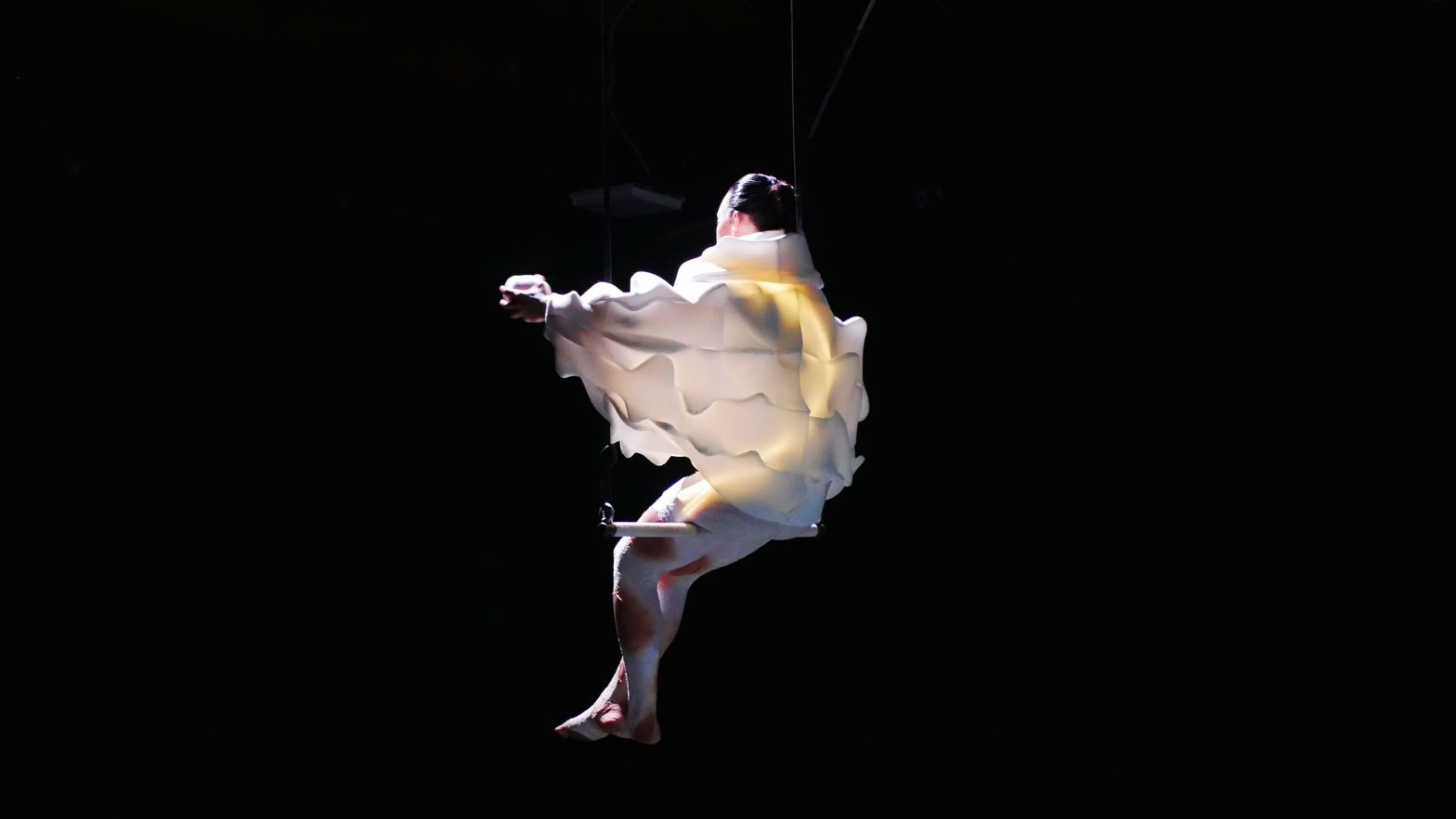In the past years, Aalto University has been successful in uniting Aalto’s own faculties in interdisciplinary research. In addition to that, research is often done in collaboration with other universities around the country and even internationally. A large multidisciplinary research project, “Digitalising performance with wearables and software”, has brought together Aalto ARTS, Aalto Science and University of the Arts Helsinki, and has recently come to its close this fall.
Funding made the project possible
It was nearly a year ago, in October 2017 when Dr. Sofia Pantouvaki from Aalto University submitted an application for Aalto Internal Seed Funding together with Dr. Mario Di Francesco. Pantouvaki, who is a professor of costume design, and Di Francesco, a professor of computer science, generated the framework for the project that connects their areas of professorship. “We needed to have a defined framework and objectives for the project before applying for the grant, but what we wanted the final project to look like visually was left blank. It was the students’ task to come up with that”, Dr. Pantouvaki says about the first steps of the collaboration. They knew that one more component, light, was going to be a crucial part of the project, thus contacted a professor of lighting design, Dr. Tomi Humalisto from University of the Arts. These three professors of distinct fields started the collaboration after being granted the funding.
Three different backgrounds
Three students got together in June to work intensely on the project for three months. There was a lot to decide, and they came up with an interactive performance between a circus artist, lights and sounds. Costume design student Tjasa Frumen, computer science research intern Emilio Lopez and lighting design student Mia Jalerva made the collaboration work even when coming from three different schools and very different backgrounds. The international trio, Frumen coming from Slovenia, Lopez from Argentina and Jalerva from Finland, communicated solely in English. The group worked on the project in multiple locations around Helsinki and Espoo.
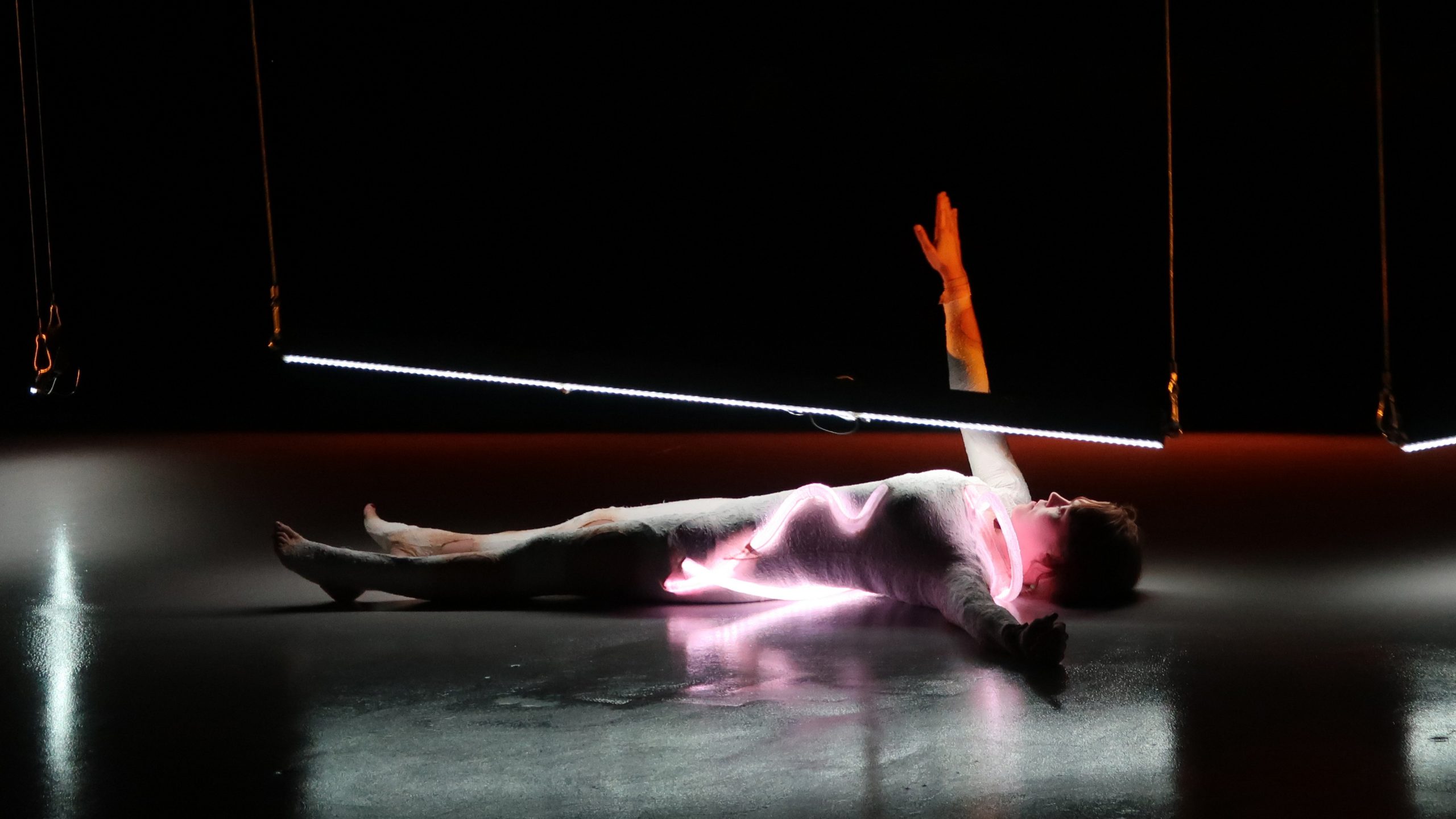
Photo by Sofia Pantouvaki
Aalto Studios’ facilities in active use
Aalto Studios provided the group with two important facilities: Costume design workshop and Kallio Stage. In the costume workshop at Otakaari 7, the costume was not only made, but also assembled and fitted. Kallio Stage was the venue for rehearsing and performing the demo. The project had two testing periods, one in late July and another one during the last ten days before the big day. Dr. Sofia Pantouvaki views these testing days even more important than the actual demo, in the sense of learning and drawing results from the research. The third important space that was used quite a bit during these months was Motion Lab at the computer science department, where the software was frequently tested. VÄS lighting design studio at UniArts was where the lights were designed and built. Having multiple locations was an advantage, but also required effective and frequent communication and scheduling from all students in the group.
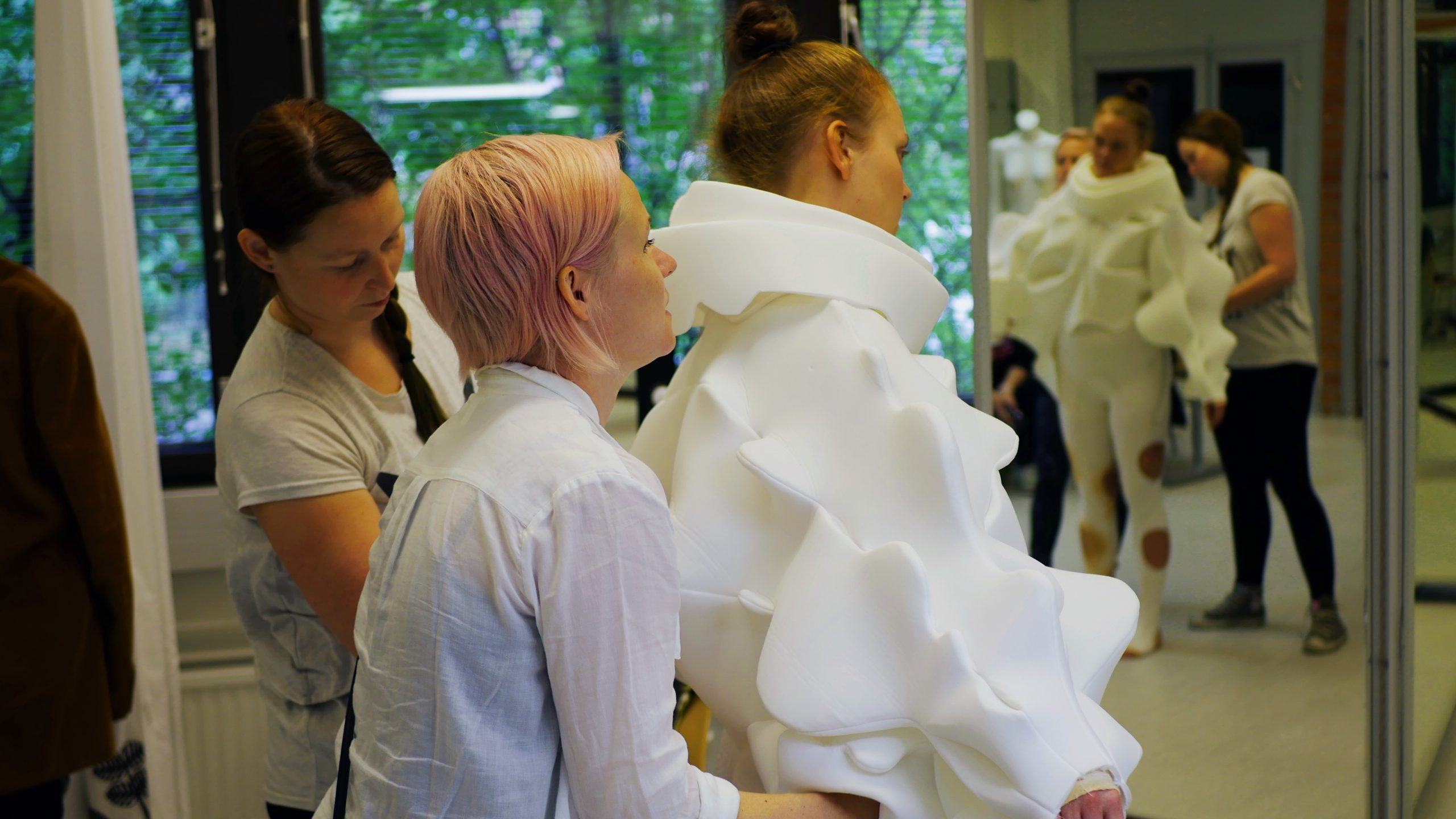
How to embed 16 meters of wire?
Students received help from Johanna Ilmarinen, the head of costume design studio at Aalto Studios, working with the group since the beginning of August. Ilmarinen provided them with sewing machines, dyeing studio, materials, and most importantly, expertise on how to use those resources. Tjasa Frumen, a costume design M.A. student, enjoyed Ilmarinen’s expertise in the workshop. The costume had many technical requirements, such as connecting and embedding the sensors, power banks and wires. “How do you embed 16 meters of wire in a performer’s costume?” Dr. Pantouvaki asks, and continues: “Johanna was the main maker and advisor when it came to making the costume. She was constantly looking for solutions to embed technology, which was certainly not an easy task.” The performer, circus artist Aliisa Rinne, wore LED lights and technology while having to be able to move smoothly, and use the trapeze, for example. Therefore it was crucial that the costume was made to meet her performative needs. To get the costume “just right” required multiple fittings throughout the project.
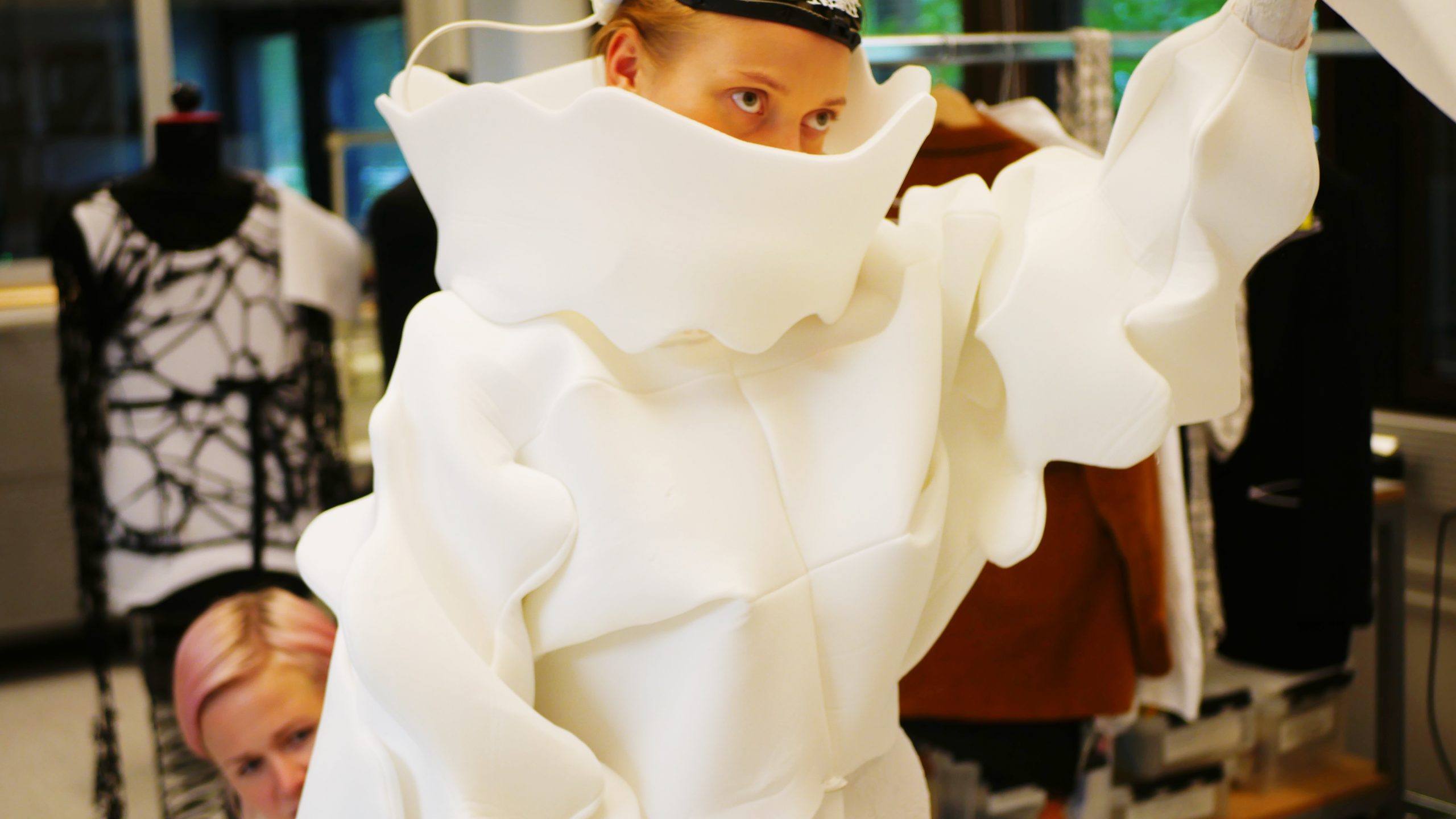
Going for the goals
The instructors, Dr. Pantouvaki and Dr. Di Francesco, had set many goals for the group to achieve. Some concerned the costume, some software, but most of the objectives required fluency in connecting the two. Technological and artistic practices needed to be understood by all students and reflected in the demo. One of the main goals from the computer science aspect of the project was to build a software that controls the technology, without requiring manual operation during the performance.
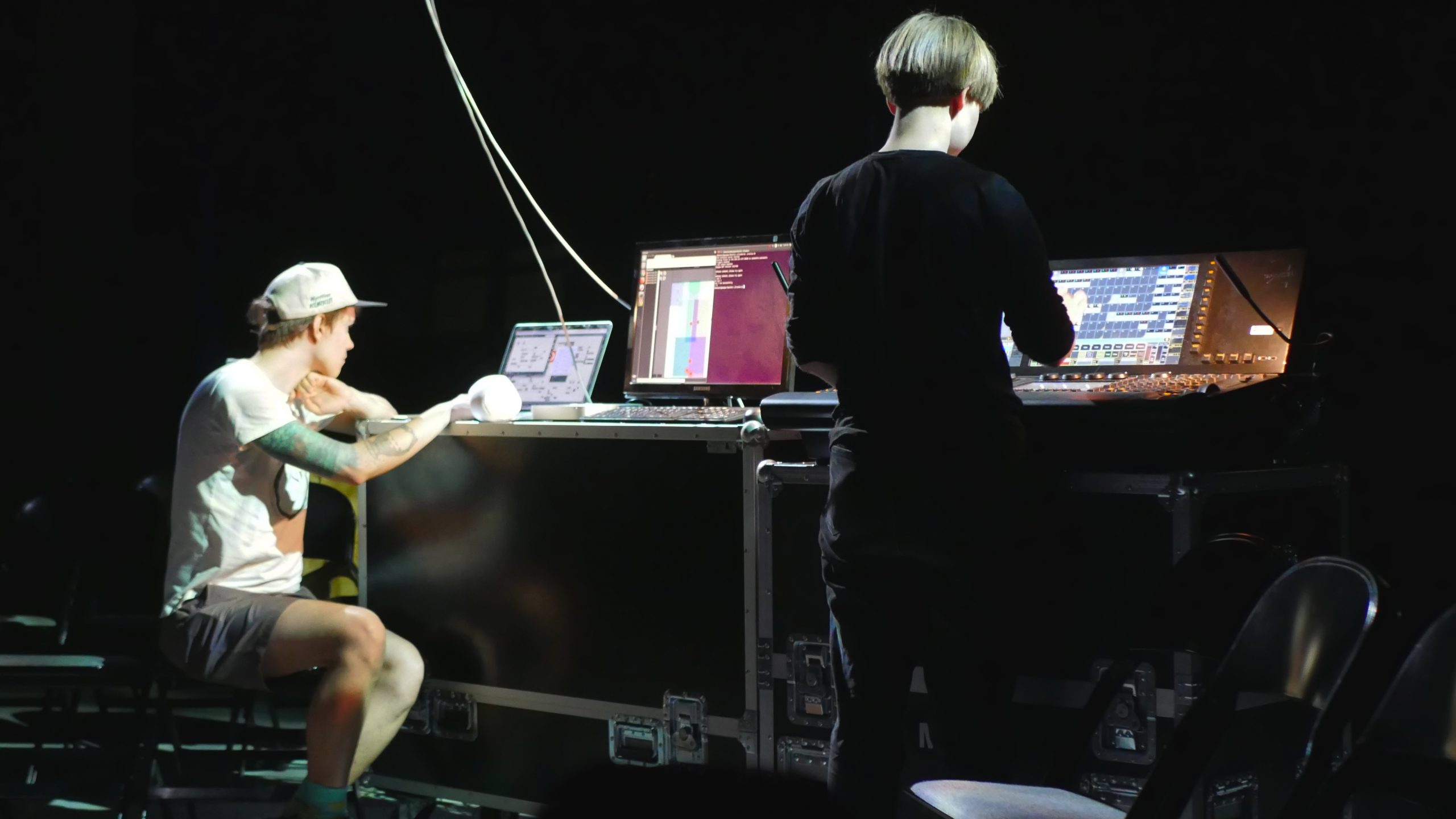
The relationship between the performer and the light was one of the key characteristics of the project and the performance. The data control allowed the light to either follow the performer or repel her. Even though light is inanimate, it can have a personality and an important role in dramaturgy. Dr. Pantouvaki explains that the light gives a new identity to the costume. “The costume looks different with light than without. This displays an important idea in costume design – how the costume is used is more interesting than the costume itself.” Pantouvaki says.
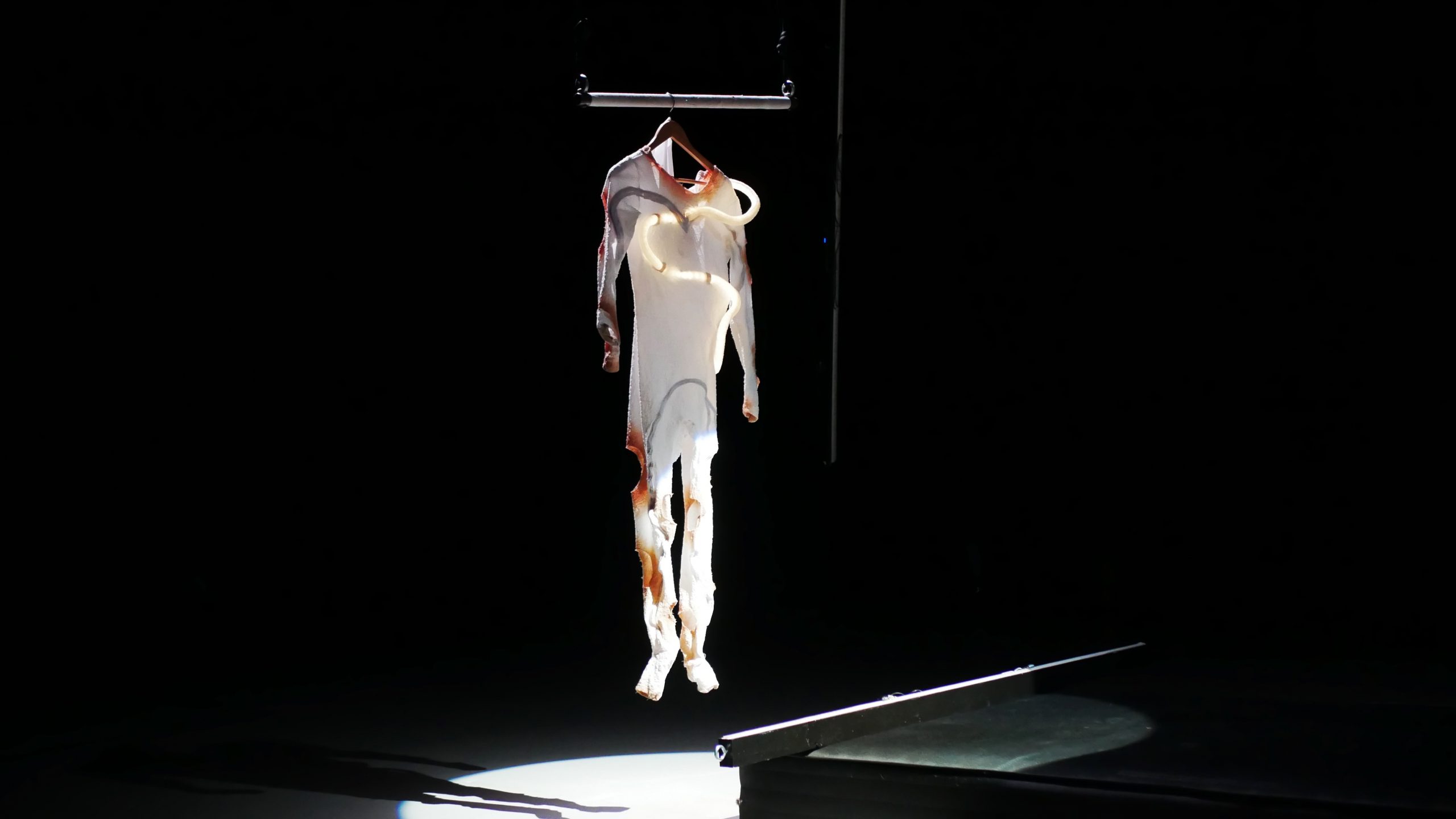
Pleased instructor: “Impressive work”
Dr. Sofia Pantouvaki was very excited after seeing the final project being put together at Kallio Stage demo, describing the performance “impressive”. She says that knowing that the lights and sounds have been made with customized programming, and seeing the group being able to just sit back and watch the demo made it even more spectacular. The project broke barriers in many ways. For example, this was the first time that a costume design student worked directly with a computer science student at Aalto University. Dr. Pantouvaki emphasizes the importance of the funding that the project couldn’t have been completed without. “This project continues the research I’ve been doing for several years. Projects like this always bring up aspects that haven’t been seen before. The students followed the framework quite precisely and achieved each goal we had set for them, so I am obviously very happy about the outcome.” Pantouvaki rejoices.
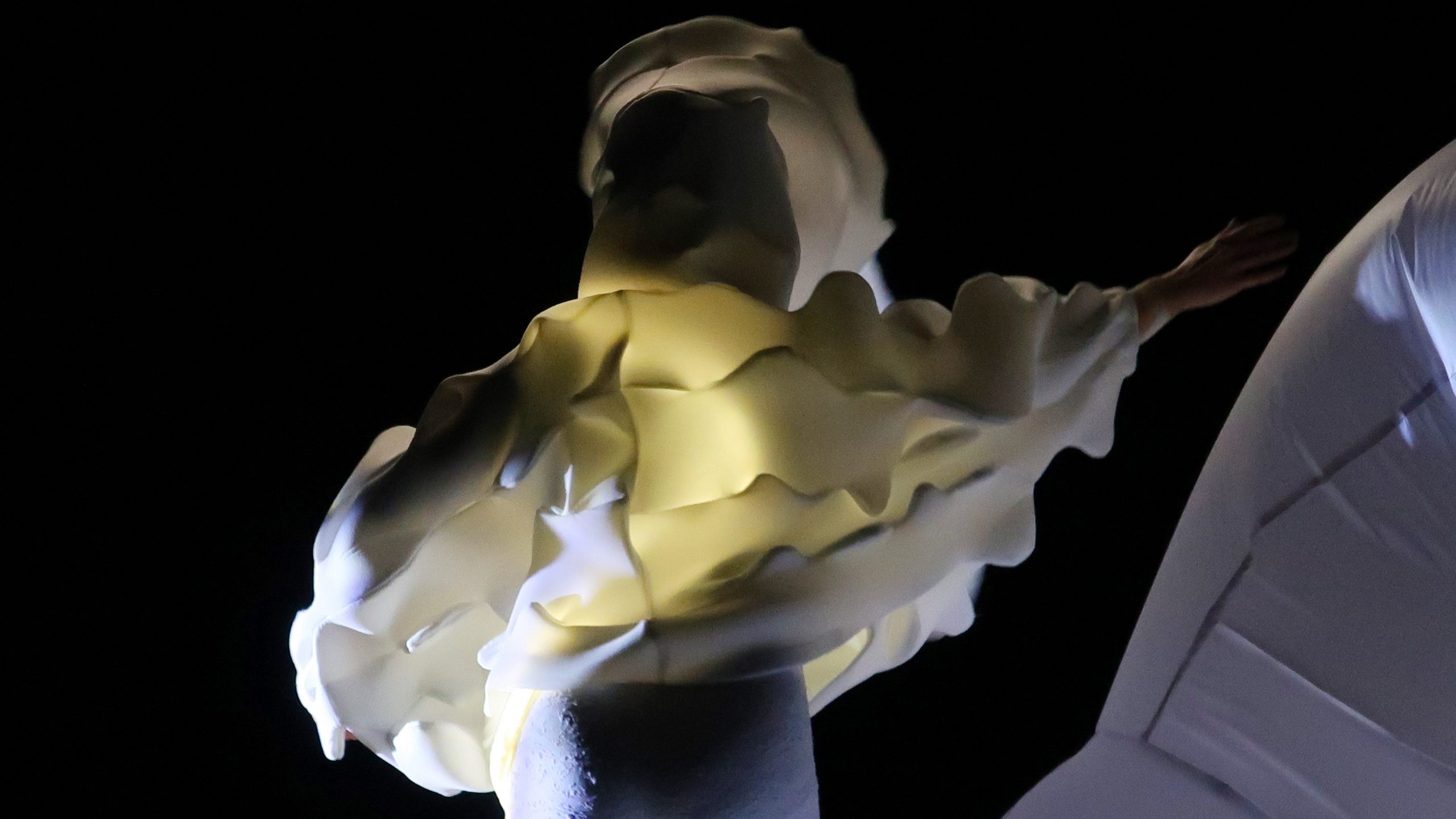
Photo by Sofia Pantouvaki
Untouched potential of costume design
Even though the project has now come to an end, this is just the beginning of this kind of multidisciplinary research. Dr. Pantouvaki sees a great potential in the future of performer-technology interaction. Self-regulating, wearable technology has been used in dance quite a lot already, however, other performing arts such as theatre, musical theatre and even opera could reach new levels of technology interaction. Dr. Pantouvaki sees many possibilities in costume for creating new narrative for the performer and more importantly, for the audience. Costumes are vital narrators in dramaturgy. Dr. Pantouvaki says that the promising future of costume design consist of something we haven’t touched yet, but projects like this definitely help take the research to new spheres. The positive experience from “Digitalising performance with wearables and software” will certainly encourage a broad variety of faculties in Aalto and beyond to collaborate again in research projects.
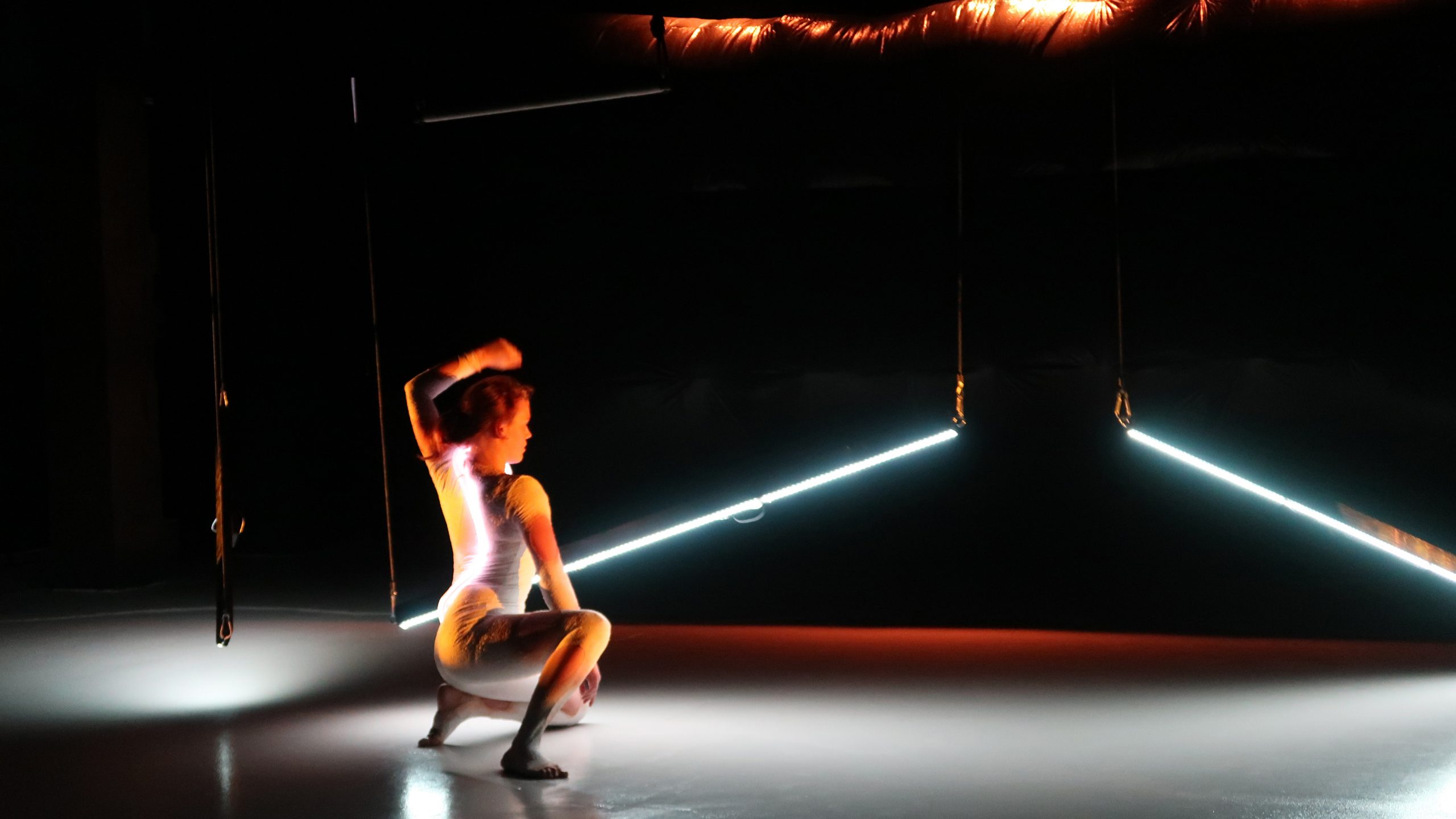
Photo by Sofia Pantouvaki
